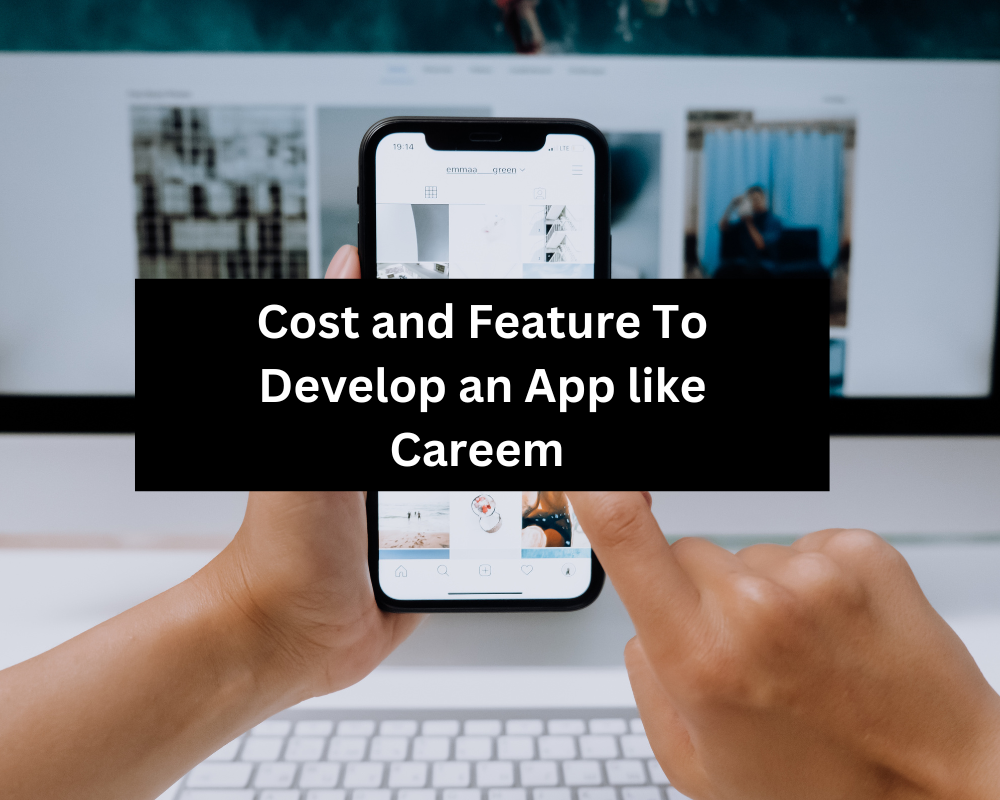Before hiring a rideshare app developer, you might be curious about how to make a rideshare app and how much it will cost to build an app for a car rental firm. Taxi apps are popular. People choose to reach their destination quickly, and it is cost-effective for app users. The app market is buzzing over taxi apps like Careem because many businesses want them for revenue.
Professional taxi app developers are needed if you have an on-demand app idea. Read up on taxi booking software before choosing a developer or best on-demand taxi app development company. This blog details the cost and functionality of the Careem app. The app’s tech stack and business model are also available.
A Quick Introduction About the Careem App
To create an on-demand app, you need skilled taxi app developers. Do your research on taxi booking software before choosing a developer or organization. This ridesharing app allows you to book any ride. Similarly, you can designate a drop-off and pick-up location, and the driver closest to you will accept your request in seconds.
The Careem app now supports contactless payments. So, you can transfer funds peer to peer with a digital wallet.PDA named Careem the most innovative app in 2021. Well, it can be solved in this blog section. Consider app development costs if you intend to make a ridesharing app like Careem.
An iOS or Android Careem-like app development might cost $8,000–$25,000.Supporting more devices and OS reduces development costs. App Design and User Interface: An app’s pricing depends on its complex UI and design. Implementing advanced features may incur more costs.
Building a Careem-like app cost factors
Careem Captain app development costs depend on numerous aspects. Some key factors affect cost:
If you want to create a ridesharing app similar to Careem, consider app development costs. The initial development costs of iOS or Android Careem-like software range from $8,000 to $25,000. Supporting additional devices and operating system versions can improve development costs.
1. App Design and User Interface
The intricacy and polish of an application’s design and user interface (UI) can affect its pricing. Customized and attractive UI elements may require extra design and development.
2. Functionality and Features
The cost of the app will vary based on the quantity and level of sophistication of features you choose to include. Outstanding features like driver ratings, real-time tracking, language support, payment integration, and advanced analytics may require additional development resources.
3. Integration with Third-Party Services
If you plan to integrate your app with third-party services like SMS gateways, payment gateways, mapping, and navigation (like Google Maps), you may have to pay extra development and licensing fees.
4. Backend Development
Setting up servers, maintaining databases, and developing APIs are all part of building a scalable and reliable backend infrastructure, which can raise the overall cost.
5. Team Size and Experience
The cost may vary depending on the development team’s size and degree of expertise. Rates may also be affected by the team’s location.
6. Testing and Quality Assurance
Essential testing and quality assurance methods are crucial for the app’s stability and users’ satisfaction. The amount will vary according to the complexity and extent of the necessary tests.
Additional costs may be incurred beyond the initial creation cost when updating software, resolving problems, and maintaining compatibility with new operating systems.
To create a fantastic app, you must work with on-demand app developers.
An utterly functional business app will be created. You can hire developers in two ways: one is on a project basis, and another is on an hourly basis. The developers will charge $15-$20/ hour.
Components of Careem-like App Development
Like other on-demand taxi booking software, it has three parts: Passenger, Driver, and Admin.
Understanding on-demand cab booking software is crucial to creating an iOS or Android app like Careem.
Three components of a taxi-booking app like Careem
Passenger App
1. Registration
With this first step, the passenger app user logs in/signs up to use the app to access their social accounts more easily.
2. Taxi type selection
This app feature lets passengers choose a taxi based on their demands and elegance. Offering hatchbacks, sedans, SUVs, and luxury cars will boost app demand.
3. Booking
Taxi rides can be booked on their phones using the app. Anywhere, anytime.
4. A push notification
All new mobile apps need push notifications. Since an app has many updates, a push notification helps users remember it without using it daily.
5. Feedback
This part serves our business rather than our users. This lets users share their app loves and dislikes, helping us understand their needs and develop. We strive to improve with every criticism and become the ultimate software. The smartphone app lets users thoroughly view their ride history with our riders. If a passenger wants the exact driver for a future ride or forgot anything in the cab, this can assist them in discovering the details.
6. Price calculator
This function lets passengers compute their trip fee based on car type, destination distance, and if they want the taxi to wait and return. This enables people to plan and choose within their budget and feel confident they aren’t overcharged.
7. Safe Payments
Multiple secure payment gateway options will boost user confidence in the business and make them choose it because they feel safer using their sensitive data to pay you.
8. Calling
Calling allows riders and passengers to coordinate for a smooth travel to their destination.
9. In-app messaging
Also, adding in-app communications for the same reasons and to improve the passenger and driver experience is easy.
Driver App
This driver-side app UI improves user experience and serves business functions. This app section focuses on driver tasks and uses. Despite sharing some functionality, the Driver and Passenger apps differ in most functions and a few extra ones. Navigation, Active/Inactive status option, trip data, paycheck reports, etc., are introduced to improve the Driver experience.
Let’s examine how these characteristics benefit drivers.
1. Active/Inactive Status
Drivers can announce their availability for forthcoming or requested rides with this feature.
2. Edit Profile
It lets drivers update their profiles with information about themselves, their vehicles, experience, documents, etc.
3. Calling
The driver’s calling feature, like the Passenger portion of the mobile app, facilitates passenger-driver contact and cooperation.
4. In-app messaging
Similar to the in-app messaging option in the Passenger part of the mobile app, incorporating it in your app to improve the passenger and driver experience is easy.
5. Activity alert
This alerts nearby drivers to a passenger’s booking ride request, allowing them to accept or decline.
6. Navigation
The driving portion of the mobile app needs this feature better to comprehend the passenger’s present location and exact location.
This function estimates the cost of each ride, allowing drivers to evaluate whether the ride is worthwhile. Drivers can obtain reports to track their daily performance and revenue.
Read: Navigating Stress and Anxiety in Uncertain Times: How Online Counseling Can Help
Admin Panel
The admin side of the on-demand taxi booking app UI is designed so that the admin manager can control app functions. Web apps are preferred over mobile apps. The app’s admin is data-driven to manage the smooth operation of the passenger and driver sides.
1. Manage Vehicles
This feature lets the admin see all the vehicles registered with the app for your business, including vehicle number, registered owner, owner’s driver’s license, etc., for data protection.
2. Invoicing and billing
It shows the admin the daily billings and invoices of every ride taken or canceled. This data is collected and analyzed to assess business performance every day.
3. Controlling compliance
This admin panel-only section contains all Passengers App feedback, which is read and used to improve the app daily.
4. Role Management
This component of the Admin Panel app manages daily ride assignments to nearby drivers using app location trackers and other driver activities.
5. Car tracking system
Only authorized people can track every app-registered car. This system lets admins track the following to assure user safety and morality.
6. Discount and promotion management
This feature lets the admin manage all app promotional vouchers.
Conclusion
Building an app like Careem requires careful planning, consideration of many issues, and app development knowledge. To make the process easier, you can hire on-demand taxi app development company and also there are many others ways to estimate development costs and optimize spending. However, scalability, security, and legal compliance must be considered. Considering these characteristics and using the tips in this essay, you may create a successful app like Careem that provides convenient and reliable transportation.


